Learn what composting is and how it can help you to reduce waste and be a Trash Hero
What is compost?
Compost is a pile of organic waste that over time breaks down or “decomposes” into a nutrient rich soil. Organic means something that was once alive or came from a living thing.
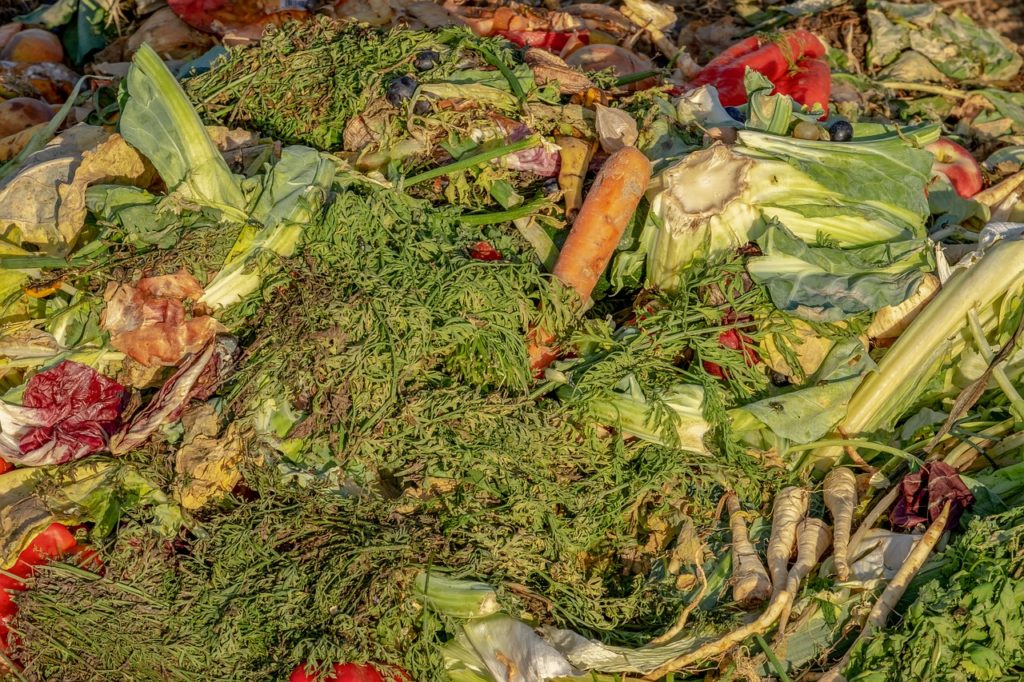
The compost pile is usually made of a mixture of “green” organic materials like food scraps, garden trimmings or fresh manure and “brown” organic materials like dead or dry leaves, cardboard and wood chips. The “green” materials contain a chemical called nitrogen and the “brown” materials contain a chemical called carbon.
These chemicals, plus air and water, make the perfect living conditions for tiny organisms, like bacteria and moulds, as well as creatures like worms and insects. They feed on the organic matter and help to break it down.
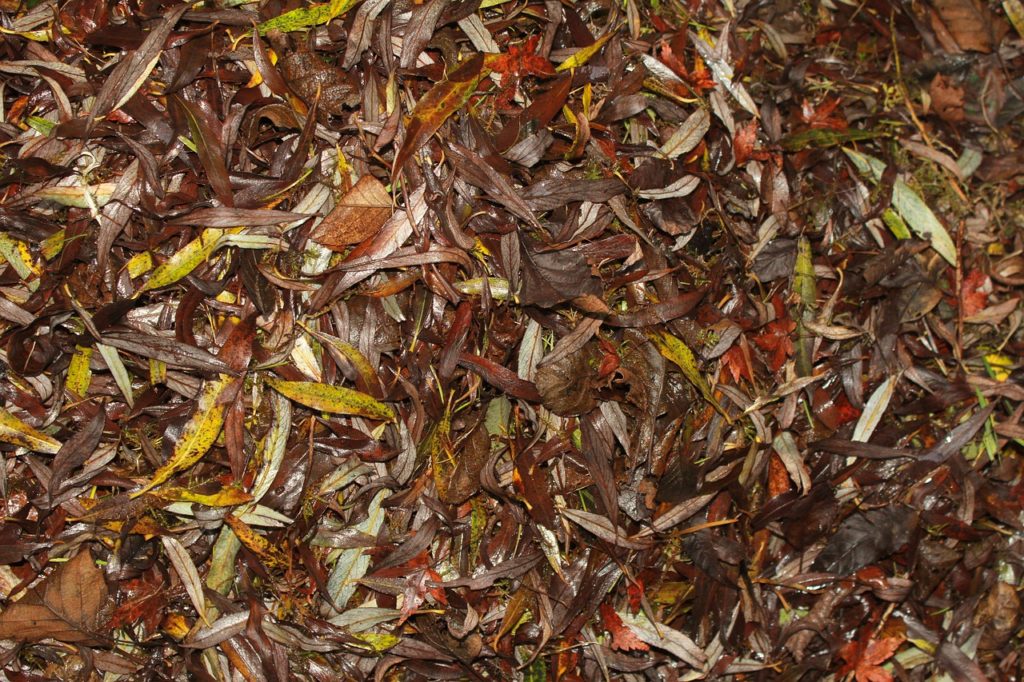
The composting process is part of the cycle of life. It happens naturally on the forest floor when dead leaves fall and decompose, protecting and nourishing the soil underneath.
Why should we compost?
Compost is very useful! It can be mixed into normal soil to help plants, flowers and crops grow faster and stronger. Instead of buying fertiliser, we can make it for free at home or at school.
Compost also helps our planet to stay safe and clean. How’s that? Let’s look at happens when we don’t compost.
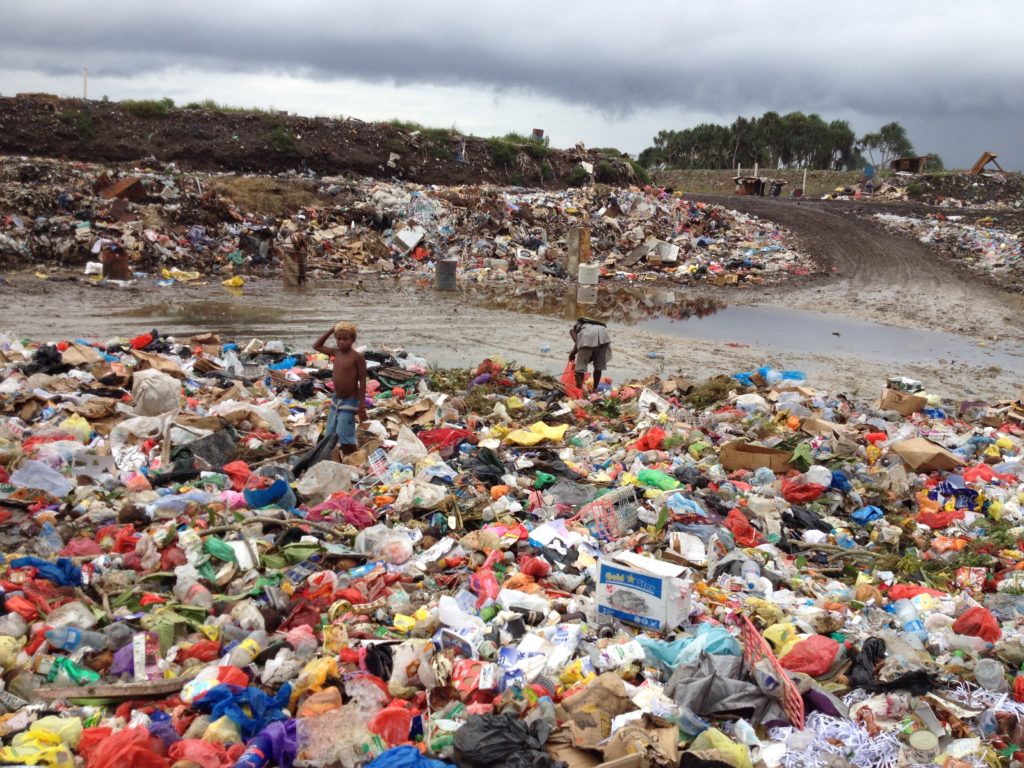
A typical landfill site. Photo by Vincent Verheyen.
Normally, people will throw their food scraps and other organic rubbish into the trash and it ends up in a very different, and much, much bigger pile called a “landfill”. A landfill is a giant pile of trash that will never break down. This is because it contains both organic and inorganic trash like plastic which cannot decompose naturally.
Landfills can be a big problem for our air and water. Food that is trapped inside a landfill doesn’t get the air it needs to break down into compost. Instead, it does two things. First it releases a gas called methane. This gas is very flammable and can cause dangerous fires on the landfill site. Methane also warms the Earth’s atmosphere and causes climate change.
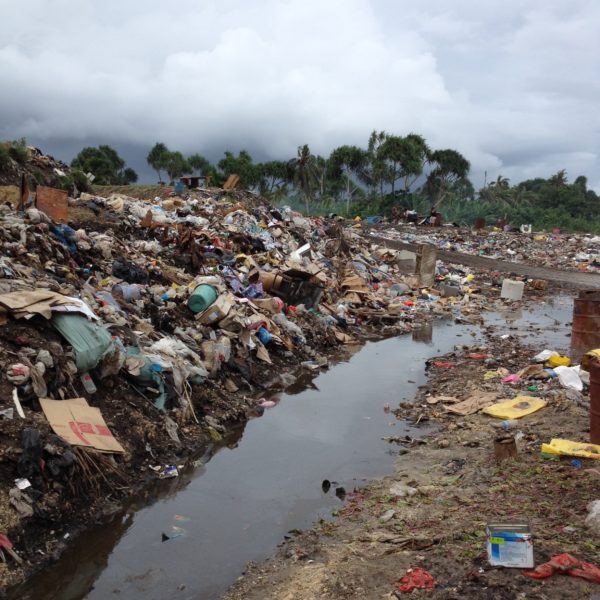
Toxic leachate at the same landfill. Photo by Vincent Verheyen.
Second, the food releases water that trickles down to the bottom of the landfill pile. The bottom layers of trash soak in this water and, because some of it – like plastic – contains poisonous chemicals, over time a toxic black liquid is formed. This liquid has a special name, “leachate”, and it can leak out of the landfill and into our rivers, lakes and groundwater.
Composting means we can avoid all of this! It’s an easy way to help slow climate change and keep our drinking water and aquatic environments safe and clean.
Organic material makes up somewhere between a quarter to a half of our total household waste, so composting will also massively reduce the amount of trash in our bins and the space taken up by landfills.
How to compost
1. SEPARATE
The key to composting is waste separation.
The first step is to always separate your organic (food and garden) waste and your inorganic waste (plastic, metal, glass). Your inorganic waste can also be separated further into recyclable and non-recyclable, but that’s another topic 😉
Remember, organic waste means everything that was once alive or came from a living thing.
From your organic waste bin, you can use pretty much everything to make compost:
Green stuff(gives the compost nitrogen) |
Brown stuff(gives the compost carbon) |
|
|
Make sure it’s all in smallish pieces – don’t use big branches or planks of wood as these will take too long to break down.
*In some countries, you should not use meat or dairy products in compost because of pests, smells and / or local regulations. Check with an adult about this!
** Never put pig, cat or dog poop into your compost. These can contain diseases which can contaminate your pile.
2. PREPARE
Next, you need to find a place to make your compost. The best location is outside, in a well-drained spot.
You can either make your compost in a hole in the ground or in a container. The size you need will depend on how much organic waste you create as a family or as a school.
A hole should be at least 50 cm deep, and as wide as you like.
A container can sit on top of the soil or be buried fully or part way. It will need small holes in the bottom and sides to let air in and water out. It might also need a cover so that it does not attract flies or rats or other pests, and so that it stays dry during heavy rain. Click here for some DIY compost container ideas.
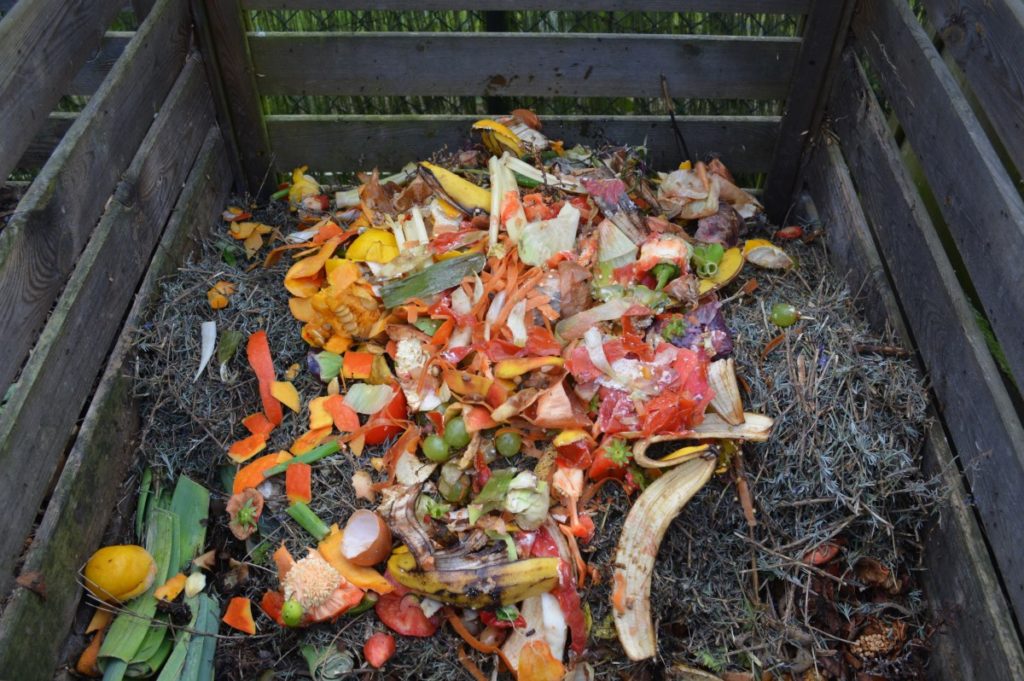
Add your brown and green organic material in layers first.
3. ACTION!
Start to fill your hole or container with your organic waste. Always start with some loosely packed “brown” material like small twigs and branches at the bottom and cover this with leaves. This makes a good base layer.
Then you can add the rest, trying to keep a good balance of “brown” and “green” waste. Keep the layers quite loose as the compost pile needs air to work. If your waste is dry, you can sprinkle it with a little water. It should be damp but definitely not soggy.
When you are finished, put the cover on the container, or cover up the hole with a layer of soil.
4. WATCH IT…
Your compost contains many living organisms that need to be taken care of. Feed them regularly with new organic material. Compost should also be mixed or “turned” at least once every week with a garden fork. If it looks dry, sprinkle it with water to make it moist, and add more “green” material. If it gets slimy or smelly, mix in some dry “carbon” waste like dead leaves or shredded paper.
5. USE IT!
Compost can take a few weeks or a few months to be ready. It depends on what you put in, and the weather. In a hot climate, it will happen faster than in colder climates, because the heat helps the organic matter to break down.
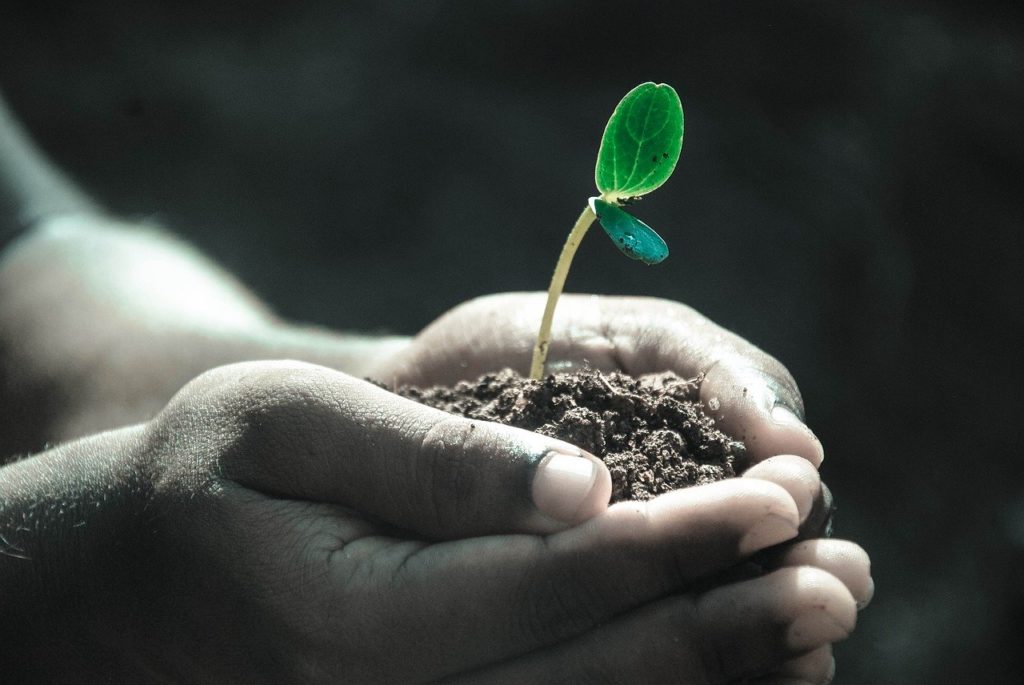
Finished compost looks like dark, crumbly soil and has a pleasant, “earthy” smell. Because of the mixing, it might have some pieces of non-decomposed waste in it. Just pick these bits out and put them back into the container or hole before you use it.
Use your compost like any fertiliser: on flowerbeds, on your vegetable patch or anywhere where the soil needs nutrients.
Celebrate your success: you have reduced waste, helped make healthy plants and a healthy planet!

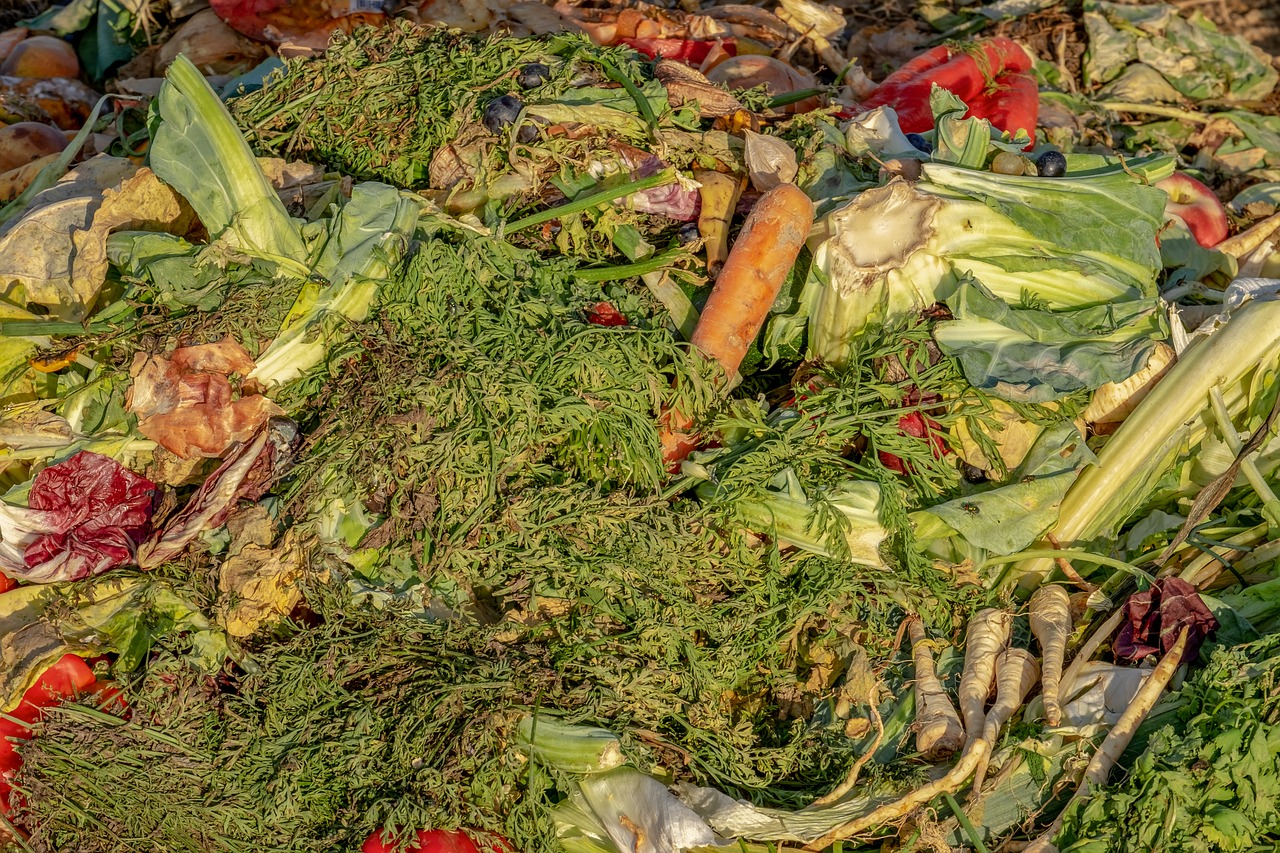
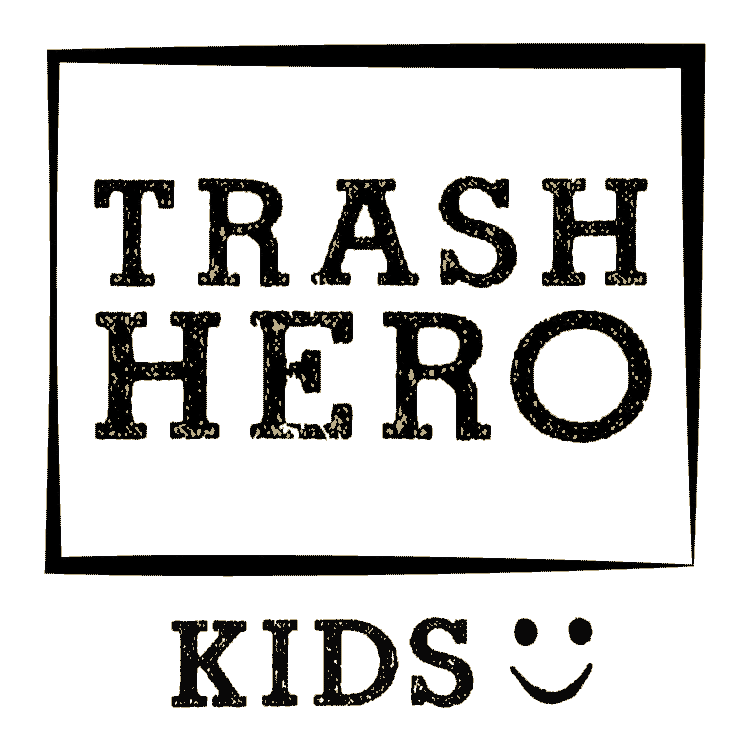
24 comments
Join the conversationWarin Chotirosniramit - 24/10/2020
If we throw away food waste into landfills, we are pulling the nutrients out of the nutrient cycle. The nutrients that should return to soil end up in the landfill where no organic matter can make use of that nutrient. Is my understanding correct about the nutrient cycle?
Babit Lal - 24/06/2021
Yes you are right, we need to ensure that nutrients reach back to the soil. Your concern is very logical and your thinking is in the right direction. We need to ensure that we segregate the organic waste and ensure that we the output of the garbage is less.
Jack - 18/10/2021
Hi
JORDANY - 04/05/2023
i know right we need t compost more often to save this earth and stop throwing away lots of food.
Tumaini Fasso - 22/03/2021
Can start Trish Heroes in Tanzania!!
Becouse we runs Cleanup with WABA every three manthly with Kids& youth
9 Food Choices We Can Make To Live More Sustainably | Marley's Menu - 01/04/2021
[…] A lot of cities have composting programs and will even provide you with your own free composting bin. Go to your cities website and search “compost”. to find out what resources are available in your area. Learn more about how to compost from Trash Hero World. […]
Agave Blue Glow: All You Need To Know In Care and Growth - - 01/05/2021
[…] While these particular plants don’t need fertilizer, giving them a little during the summer can boost their health. Simply use a fertilizer made for cacti and succulents or try some earthworm humus or fish emulsion. Another great way to feed your agave plant is by giving it a little homemade compost. […]
Peter Bourke - 04/05/2021
Has anyone seen actual proof that so-called compostable plastics actually do break down into valuable nutrients for our soil?
JezW - 21/02/2022
The composting “plastic bags” I use are starch based not plastic, so the do break down…. adding nutrients… who knows…. that’s too scientific 🙂
Seema - 21/02/2022
Certified home compostable plastics (only a very small percentage carry this label) are tested to break down into water, CO2 and whatever chemicals or plasticisers they were made with. They have little to no nutritional value for the soil.
In a zero waste scenario, there is almost no use case for home compostable plastic – if you are composting at home, why do you need a plastic bag for the scraps?
Compostable plastic is generally used in municipal settings for food waste collection so that the bags from each house can go straight into the industrial composter. The larger pieces of plastic are usually then filtered out once the compost is ready.
nik - 06/06/2021
I have a small space in my yard to plant some veggies I am in Trenton, NJ so lots of random dry spells and thunderstorm. I have always helped my mother who has a green thumb like no one i have ever met. we did a compost pile of green organic food item under a tarp one summer and it was very far back in her yard so unknowingly we were attracting opossum, skunks, raccoons and who know what else. My question is (after the longest grammatically incorrect intro lol) would beginning compost be best indoor or outdoors? also do i plant before or after laying the compost down once its ready? any advice would be much appreciated. Thank you!!!
Tanya Travis - 19/10/2021
Hi there, I watched a programme here in New Zealand where they drain the compost liquid and use the drained waste as a fertiliser? Has anyone else found this useful and what is usual method to drain? The programme showed them using a mesh cloth, which is time consumming. Just wondering if anyone else does this? Thank you, Regards, Tanya
Elaine Burns - 03/01/2022
Can chopping up waste material like potato peelings etc. help the process speed up?
Seema - 14/01/2022
Yes, definitely! Small pieces take far less time to break down than large pieces or whole fruit etc.
New Year's (Low Tox) Resolutions - Eva Van Strijp - 13/01/2022
[…] least local and improve the quality of your soil and your food. Make your own Aloe vera fertiliser Learn to compost – a great way to reduce your waste and recycle it back into the garden Learn which poo is the […]
Liz Almendarez - 23/02/2022
Can I add burnt ashes to the compost pile
Martyna Morawska - 23/02/2022
Hi Liz! You can compost certain types of ash, as long as they are added in small amounts! Ashes from unpainted wood fires, burning paper or cardboard
and burning grasses should be absolutely fine.
Mike Atherton - 10/04/2022
Good book about composting: Do the Rot Thing
How To Make Homemade Organic Compost For Plants? - 15/04/2022
[…] components include Organic material from leftover food and grass clippings to organic fertilizers made from plant or animal […]
Composting 101 in Raleigh, NC - RALtoday - 21/04/2022
[…] valuable (natural) fertilizer? Composted soil not only helps plants + crops grow strong, but it aids in eliminating extra methane in the air, which is toxic to the earth’s […]
Home Features to Support the Plant-Based Lifestyle - VEGWORLD Magazine - 05/05/2022
[…] and where possible, composting is an excellent way to minimize food waste within a plant-based lifestyle and promote the cyclical health of your garden. This is also a great […]
stephen king - 20/07/2022
we have a large garden and cut the grass once a week. our ‘grass’ is a mixture of grass clover and weeds like buttercups daisies and dandelions! can this be added to compost. we cut 7000 sq m so it will only be a small amount
DiscoverNet | How To Plant A Fall Vegetable Garden - 02/11/2022
[…] in a small bucket-style bin on the counter or a larger one that you keep in the yard. According to Trash Hero World, you simply need to collect organic material, such as the leftovers after each meal, into your bin […]
How to Create Liquid Fertilizer from Plant and Lawn Clippings - plantfoodfacts.com - 25/03/2024
[…] Redefine Food Waste […]